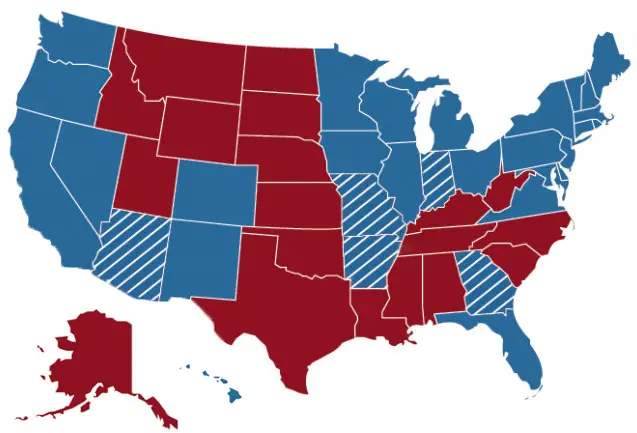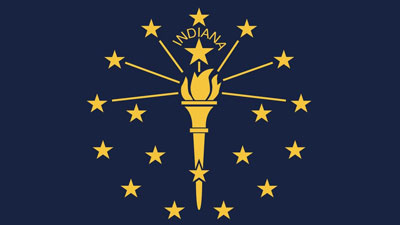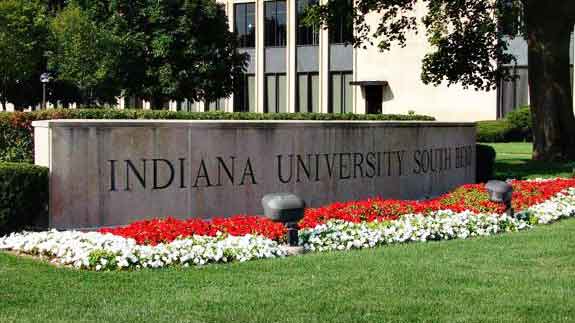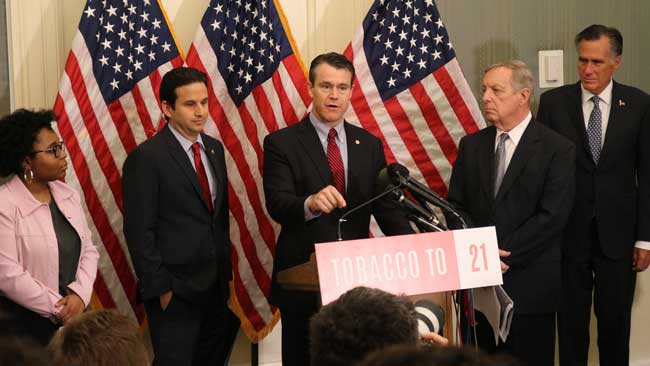Hillary Clinton has not even announced a run for president yet but political operatives are already laying the groundwork for a potential campaign — and Indiana may be a prime target for the Democrats.
Building a presidential campaign in the modern era takes years of preparation. Serious candidates typically want to get at least a two year head start — although many of the current potential Republican candidates have been cycling between early primary states like Iowa, New Hampshire and South Carolina just days after the 2012 campaign ended.
This perpetual campaign cycle drives voters nuts — deservedly so — but in an era of big money in politics where unlimited money equals free speech (according to the Supreme Court), building a campaign infrastructure early on is critical for success.
That’s one reason why a super PAC known as Ready for Hillary is laying the building blocks for a run in the early primary and caucus states, where the former Senator and Secretary of State is a decided favorite for the Democratic Party nomination.
Whether Clinton faces anything other than token opposition is not known. No Democrats have officially announced their intentions yet, although Senator Bernie Sanders is flirting with a run.
Sanders is making the rounds on the talk show circuit and in the early primary states, hitting all of the right tunes that a Democratic electorate would like to hear from a presidential candidate.
“I’m going to be very honest with you. We may have reached the tipping point where candidates who are fighting for the working class and the middle class of this country may not be able do it anymore because of the power of the billionaire class,” Senator Sanders said on CNN this morning.
But political pundits question whether Sanders could win a primary against Clinton.
Senator Elizabeth Warren — who would probably stand a better chance against Clinton — was just appointed to the Democratic leadership in the Senate, likely signaling that she will be staying in the Upper Chamber for a while rather than running a possibly futile campaign against Clinton.
This leaves the Ready for Hillary people already looking ahead to the general election. This type of over-confidence — that borders on arrogance — cost the Clinton campaign big time in 2008. But without a Barack Obama-esque opponent, her chances look more solid than in that losing cycle.
In an interview with Talking Points Memo, Mitch Stewart — the battleground state director for the Obama 2012 campaign and an adviser to Ready for Hillary — discussed possible Electoral College scenarios.
Stewart says that a Clinton campaign would start with the same map as President Obama in 2012. They would look to expand from there with two separate strategies.
The first would be an appeal to white working class voters in Arkansas, Indiana and Missouri.
“Where I think Secretary Clinton has more appeal than any other Democrat looking at running is that with white working-class voters, she does have a connection,” Stewart told TPM. “I think she’s best positioned to open those states.”
Few people thought that Indiana would go blue in 2008.
It did.
Obama utilized a built-up party infrastructure after a hotly contested presidential primary to drive turnout in traditionally low-turnout states like Indiana and North Carolina.
Both states swung back to the GOP in 2012, the only two that Romney was able to capture that McCain failed to hold in 2008.
Stewart thinks that the Clinton campaign can turn states like Arkansas, Indiana and Missouri blue once again in 2016.
White working class voters are “the difference between winning and losing, assuming that we maximize turnout, we maximize voter registration in St. Louis, Indianapolis and northwest Indiana,” Stewart says.
Both Hillary and Bill Clinton have a history of support with white working class voters. President Bill Clinton managed to carry a number of states that over the past couple decades have trended Republican.
Bill Clinton carried Arkansas, Louisiana, Kentucky, Missouri, Tennessee, and West Virginia twice — states that Gore, Kerry and Obama all failed to win.
Many of these states have simply completed a shift that has taken place in the South since the Civil Rights Act of 1964 passed and as part of the Republican Party’s “Southern Strategy“.
Much of the South is decidedly in Republican hands. It is hard to see Tennessee, for instance, shifting back in the Democratic column even with a Clinton on the ticket.
Growing and increasingly diverse Border States, on the other hand, have already trended towards Democrats. Virginia was solidly in the Democratic column in 2008 and 2012. The once ruby red state — which voted for Republican presidential candidates between 1968 and 2004 — now has a Democratic governor and two Democratic senators (Senator Mark Warner survived a close scare this past election, despite the GOP wave).
Oddly, North Carolina was not mentioned as a possible target. The state went for Obama in 2008 and only narrowly went back to the Republicans in 2012. President Bill Clinton lost North Carolina narrowly in 1992. It would seem to be an obvious target, especially with unpopular Governor Pat McCrory on the ballot.
The second strategy would be to increase turnout in states that are demographically shifting from red to purple. Arizona and Georgia both have rapidly increasing Latino populations. Georgia has a large black population that nearly helped President Obama win the state in 2012. The Clinton camp believes that she could put both states in play in 2016.
That being said, Ready for Hillary has an incentive to drum up general election expectations this early in the presidential cycle: it not only makes her look good with donors (her fundraising ability could scare away potential opponents), it also builds a media narrative that Hillary is the most electable Democrat in 2016.
Building such an indelible impression could protect her from a credible challenge on her left among a liberal base that already views her with a good degree of skepticism.
But electability — particularly using an Obama-like emphasis on expanding the electoral map — could be the Hillary campaign’s strongest argument in a primary, even if they have no real intention to play for states like Arizona, Georgia and Indiana.
————










